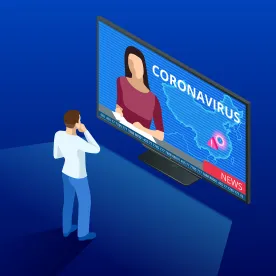Several weeks have passed since Congress passed two major legislative packages focused on providing liquidity for businesses and individuals, and keeping workers employed during the COVID-19 pandemic. The Families First Coronavirus Response Act (the “FFCRA”) and the Coronavirus Aid, Relief, and Economic Security Act (the “CARES Act”) include a variety of tax measures intended to support these goals. As with most legislation, the new laws raised many questions regarding eligibility and implementation. Since then, the Treasury and the IRS have released several revenue procedures, notices, and FAQs to help taxpayers understand the rules and requirements. This alert serves as both a reminder of these tax benefits available to businesses and identifies additional guidance that will be helpful as businesses evaluate whether they qualify for certain benefits. It also identifies some of the changes to FFCRA and CARES benefits included in the HEROES Act, H.R. 6800, recently approved by the U.S. House of Representatives.
For a deeper discussion on how your business may take advantage of and/or be affected by these tax benefits from the FFCRA and CARES Act, please reach out to one of the authors of this alert. Additional information on COVID-19-related legislation and tax guidance can be found in our Responding to COVID-19 section on HUB.
The Families First Coronavirus Response Act
The FFCRA offers tax credits to offset the costs imposed upon employers with fewer than 500 employees who are required to offer sick and family leave benefits to employees impacted by the coronavirus either directly or through a family member.
The FFCRA generally requires covered employers to provide paid leave through two separate provisions:
-
The Emergency Paid Sick Leave Act, which entitles workers to up to 80 hours of paid sick time when they are unable to work because they have COVID-19 or are quarantined, and
-
The Emergency Family and Medical Leave Expansion Act, which entitles workers to certain paid family and medical leave when caring for an infected relative or a child not in school or daycare.
In order to reduce the financial burden, the FFCRA provides these small and midsize employers with tax credits applied against the employer’s share of FICA and Medicare taxes that reimburse the employer, dollar-for-dollar, for the cost of providing these mandated benefits.
-
The credits apply to leave benefits paid from April 1, 2020 through December 31, 2020.
-
The credits cover a maximum of 100 percent of up to ten days of qualified sick leave wages and up to ten weeks of qualified family leave wages (and any qualified health plan expenses allocable to those wages) and can be spread over more than one calendar quarter.
-
Credits will increase the eligible employer’s gross income by the amount of the credit.
-
To avoid a double benefit, any wages taken into account to determine these credits cannot be taken into account for purposes of determining other COVID-19-related credits, including the employer payroll deferral, the employee retention credit, the paid sick and family and medical leave credits, and certain other credits, including the sick and family leave credit enacted in the Tax Cuts and Jobs Act under Internal Revenue Code (“IRC”) Section 45S.
-
The credits can be taken against payroll deposits, are refundable, and can be advanced by filing IRS Form 7200.
The HEROES Act would expand the sick and family leave benefits by:
-
Extending FFCRA eligibility through December 31, 2021,
-
Suspending the minimum 1,250 work hour eligibility requirement,
-
Reducing the 12 month service requirement to 90 days,
-
Allowing employees to take paid sick and family leave intermittently or on a reduced schedule,
-
Adjusting the amount of qualified wages to which an employee is entitled, and
-
Imposing certain limitations on employers that require documentation and certification from employees requesting qualified leave time.
The Coronavirus Aid, Relief, and Economic Security Act
The CARES Act contains several tax measures aimed at providing liquidity for businesses to keep workers on payroll and to pay operating expenses.
-
Employee Retention Credit (“ERC”): The ERC is a tax credit specifically designed to keep workers employed and to avoid furloughs and lay-offs. It is a 50 percent credit against up to a maximum of $10,000 in qualified wages (including allocable health care benefits) per employee paid after March 13, 2020 and before January 1, 2021. The highlights of the ERC are generally:
-
A business is eligible for this employee retention credit if its operations were subject to a full or partial suspension due to a government order related to the COVID-19 crisis, or if its gross receipts have declined more than 50 percent compared to the same quarter in the prior year,
-
Employers with 100 employees or less that meet either of these requirements may claim the credit on wages paid to all employees whether the employees are affected by COVID-19 or not, while employers with more than 100 employees are limited to taking the credit only on wages paid to employees while they are not providing services,
-
The credit is applied against the employer’s share of FICA taxes, is refundable, and may be received in advance,
-
The credit is not available to employers receiving Paycheck Protection Program (“PPP”) loans or that are otherwise receiving certain loans under Section 7(a) of the Small Business Act,
-
Aggregation rules apply for purposes of determining employer size, whether a PPP loan has been received by any member of the group, and whether the suspension of operations and gross receipts tests have been met, and
-
The credit is reduced by any claimed Work Opportunity Tax Credits, research expenditure tax credits, family and medical leave tax credits under IRC Section 45S, and the payroll tax credits under the FFCRA (described above).
-
Since the CARES Act was enacted, the IRS issued an extensive list of FAQs to address the implementation of the ERC and many of the questions that arose from the statute. These include whether health care benefits paid to a worker who is not receiving a wage or salary are eligible wages (they are), whether wages paid to workers for more hours than they are working are qualified (they are), and whether the aggregation rules apply for purposes of determining if the entire business is subject to a partial shutdown or a reduction in gross receipts (they do). However, certain IRS positions remain controversial, including that an essential employer generally cannot qualify for the ERC even if some of its operations are impacted, and that interruptions in the operations of a supplier can cause a business to be eligible but lack of customer demand due to a government order does not.
The HEROES Act would greatly expand the ERC by increasing the credit percentage, the wage cap, increasing the employee and gross receipts standards to be a large employer, and reducing the gross receipts threshold to determine whether there has been a significant decline in gross receipts.
-
Payroll Tax Deferral: Any employer is eligible to defer payment of the employer’s share of FICA taxes from March 27, 2020 through December 31, 2020, even if the employer is not negatively affected by COVID-19. Note that this is a deferral and not a holiday. Half of the deferred tax must be paid by December 31, 2021, and the remaining half by December 31, 2022. An employer with a PPP loan that has been forgiven can utilize the deferral only to the point in time up to forgiveness. Employers will remain solely liable for the amount of deferred taxes to be paid by the delayed due dates, even if they use third-party agents or certified professional employer organizations who deposit employment taxes on the employer’s behalf.
The HEROES Act would allow employers with PPP loan forgiveness to take advantage of the employer payroll deferral through the end of 2020, including after the loan has been forgiven.
-
Tax Impacts of PPP Loan Forgiveness: Although cancellation of indebtedness normally triggers taxable income to the borrower, the CARES Act specifies that amounts forgiven under the PPP are not included in the borrower’s taxable income. However, the CARES Act did not address whether expenses paid with loan proceeds that are forgiven are deductible and this has raised considerable debate. In Notice 2020-32, the IRS determined that the expenses are not deductible since they are paid with income exempted from taxation. Additionally, PPP loans cannot be used to pay any amounts for which a tax credit is allowed under the FFCRA sick and family leave provisions discussed above.
The HEROES Act would allow the deductibility of expenses paid with PPP loan proceeds that are forgiven.
-
Net Operating Losses: The CARES Act temporarily suspends certain changes made to the treatment of net operating losses (“NOLs”) that were made in the Tax Cuts and Jobs Act (“TCJA”), including the repeal of carrybacks and an 80 percent taxable income limitation on NOL carryovers. It also includes a technical correction for the 2017/2018 straddle year that arose out of the TCJA.
-
5-Year Carryback for Net Operating Losses: The CARES Act allows corporations to carry back their NOLs arising in tax years beginning after December 31, 2017, and before January 1, 2021 (i.e., calendar years 2018, 2019, and 2020), to each of the five tax years preceding the tax year of the loss. Taxpayers may elect to forego the entire five year carryback period with respect to a particular year’s NOL, with the election being irrevocable. Refund claims with respect to overpayments attributable to such NOL carrybacks are timely if they are filed during the period ending three years after the due date (including extensions) for the tax year of the NOL.
The HEROES Act would limit the loss carryback to taxable years beginning January 1, 2018 or later. Carrybacks would be prohibited for taxpayers subject to deduction limitations for employee compensation, golden parachute payments, and stock buybacks.
-
Temporary Suspension of the 80 percent Taxable Income Limitation for NOLs: For taxable years beginning before January 1, 2021, the CARES Act temporarily suspends the 80 percent of taxable income limitation on the use of NOL carryovers, thereby allowing taxpayers to fully offset their income with NOL carryovers. Under the revised provision, there is no limit on the use of NOLs generated in tax years beginning before January 1, 2018, but the use of NOLs generated in tax years beginning after December 31, 2017 and carried to a tax year beginning after December 31, 2020 will be subject to the 80 percent taxable income limitation without giving effect to the deductions for qualified business income, FDII and GILTI.
-
NOL Technical Correction for the 2017/2018 Straddle Year: The CARES Act includes a technical correction to the TCJA allowing NOLs arising in the 2017/2018 straddle year to be eligible for a two year carryback period and 20 year carryforward period. Taxpayers with an NOL arising during the 2017/2018 straddle year may file using either Form 1045 or Form 1139 to either (i) carryback that loss; or (ii) irrevocably forgo the carryback. The application will be treated as timely filed if filed no later than July 27, 2020.
-
Carryback Limitation on Real Estate Investment Trusts (“REIT”): The CARES Act reinstates the pre-TCJA REIT carryback rules, which prevents REITs from carrying back an NOL from a REIT year to any preceding tax year. In addition, if an NOL arises in a non-REIT year, it cannot be carried back to any preceding tax year that is a REIT year. A REIT year generally means any taxable year for which a taxpayer is subject to the real estate investment trust provisions of the Code.
-
Carryback Elections for Section 965 Inclusion Years: A taxpayer may elect not to carry back NOLs to a year where there was income inclusion by reason of Section 965 (the TCJA repatriation transition tax). If an NOL is carried back to such a year, then the taxpayer is deemed to have automatically made the Section 965(n) election to “waive off” use of the NOL against the taxpayer’s transition tax inclusion. In brief, the Section 965(n) election precludes a taxpayer from applying an NOL carryover (and now carryback) against repatriation income, which preserves the ability to utilize those NOLs against other future income. In lieu of the waiver applying to the entire carryback period, a taxpayer may choose a modified method where the NOL is carried back, and excludes the Section 965 inclusion years.
-
Repeal of Limitation on Excess Active Business Losses: The TCJA imposed a cap on the deductibility of non-corporate active business losses of $250,000 single/$500,000 joint. The CARES Act temporary repeals this cap for tax years 2019 and 2020.
The repeal of this cap has been highly controversial, with critics saying it disproportionately benefits wealthy pass-through investors. The HEROES Act would restore the cap permanently.
-
Accelerated Refund of the Corporate Alternative Minimum Tax (“AMT”) Credit: The TCJA repealed the corporate AMT beginning after December 31, 2017, requiring corporate taxpayers with unused AMT credits to use up that AMT credit over a four-year period from 2018 to 2021. The CARES Act allows a corporate taxpayer to accelerate the refund of unused AMT credits by electing to take the entire refundable AMT credit amount in its 2018 or 2019 tax year. Affected taxpayers have until December 31, 2020 to file an application under Section 6411(a) to claim the AMT refund.
-
Temporary Increase of the Section 163(j) Interest Deduction Limitation: For taxable years beginning in 2019 and 2020, the CARES Act temporarily increases the Section 163(j) limitation imposed in the TCJA on the deduction for business interest expense from 30 percent of a taxpayer’s adjusted taxable income (“ATI”) to 50 percent. A corporation may elect not to have the temporary limitation increase apply to any taxable year, but a partnership may only elect to do so for the tax year beginning in 2020. In the case of a partnership, a modified set of rules apply for tax year 2019. Partnerships instead treat 50 percent of any excess business interest allocable to a partner as paid or accrued by the partner in 2020 and not subject to Section 163(j), and the remaining 50 percent would be subject to the Section 163(j) limitation. The CARES Act also provides additional flexibility by permitting a taxpayer to elect to substitute its ATI from its 2019 tax year for its ATI in its 2020 Section 163(j) calculation.
Policy Considerations
As the COVID-19 pandemic continues, Congress continues to respond with legislation and the Administration continues to respond with guidance. Despite best efforts, the FFCRA and CARES Act benefits are not always responsive to the particular needs or practices of a business or industry. Please contact any of the authors of this alert to discuss how you can provide input to the legislative and administrative processes to help shape an outcome that is responsive to your company’s particular circumstances.
Additional Resources
For additional details regarding these tax benefits in the FFCRA and the CARES Act, please refer to our COVID-19: CARES Act Tax Summary Guide found at our K&L Gates HUB COVID-19 resource page, or contact any of the authors of this alert for further discussion to evaluate your eligibility.






 />i
/>i

